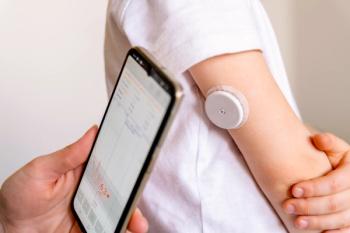
EV-303 Trial Shows Unprecedented Survival Benefit With Enfortumab Vedotin Plus Pembrolizumab in Cisplatin-Ineligible Bladder Cancer
The combination significantly improved event-free and overall survival compared with surgery alone, marking the first study to show an overall survival benefit in this patient population.
The phase 3 EV-303 trial is redefining treatment expectations for patients with cisplatin-ineligible muscle-invasive bladder cancer. The combination of enfortumab vedotin (Padcev; Astellas, Pfizer) and pembrolizumab (Keytruda; Merck) demonstrated remarkable improvements in both event-free and overall survival compared with surgery alone, with the highest pathologic complete response rate ever reported in a phase 3 study.
In an interview with Pharmacy Times, Christof Vulsteke, MD, PhD, discussed the magnitude of benefit, the potential for this regimen to become a new standard of care, and how these findings could shape future trials in bladder cancer.
Q: Could you summarize the key findings from EV-303, particularly regarding pathologic complete response and event-free survival outcomes, and how they compare with surgery alone?
Christof Vulsteke, MD, PhD: All end points you mentioned favored the combination of enfortumab vedotin and pembrolizumab versus surgery alone. If you look at the primary end point of event-free survival, the results were quite striking. After 2 years, 39% of patients in the control arm were event-free, compared with 74% in the experimental arm. This translated to a statistically significant hazard ratio of 0.4, which is very good in oncology terms.
Looking at the key secondary end point of overall survival, the trial again showed a strong benefit, with a hazard ratio of 0.5. At 2 years, 63% of patients in the control arm were still alive compared with 80% in the intervention arm. This is the first trial ever to demonstrate an overall survival benefit in this patient population.
Regarding pathologic complete response (pCR)—meaning no cancer cells are detected under the microscope after surgery—we saw a pCR rate of 57.1%. It’s likely even higher, because patients who achieved very good responses on scans and declined surgery were considered nonresponders but still included in the denominator for transparency. This makes the reported pCR rate even more impressive—the highest ever reported in a phase 3 trial.
Q: What is the clinical significance of these results for patients who are ineligible for or decline cisplatin-based chemotherapy? Does this combination represent a new standard for this population?
Vulsteke: I think if these products are available, it’s hard to imagine not giving this combination to eligible patients. The data clearly show how poorly the control group performed, so this regimen looks like an obvious choice for patients who want treatment.
Implementation will depend on regulatory approvals, label indications, and availability, but once accessible, it should be used widely. There are very few contraindications—mainly for patients who are not eligible for checkpoint inhibition or enfortumab vedotin, such as those with severe preexisting polyneuropathy.
Looking ahead, these results even open the door to new research questions. With such a high pathologic complete response rate, we can start to imagine future trials exploring whether bladder removal is always necessary.
Newsletter
Stay informed on drug updates, treatment guidelines, and pharmacy practice trends—subscribe to Pharmacy Times for weekly clinical insights.




















































































































































































































